The Beach by the Decade

Join Us
The Campus Growth
Join us as we dive into our campus's journey, from old traditions to new traditions, and the people that have become part of our university family.


Our story begins
The Beach traces its origins to 1949 with the passage of Assembly Bill 8, which called for the establishment of a state college to serve the rapidly growing populations of Los Angeles and Orange counties.
A selection committee chose a 322-acre site on a hill in Long Beach, known as Puvunga, an ancient sacred site of the Tongva people, as the location for the new college.
The Los Angeles-Orange County State College, as it was initially named, opened its doors on September 28, 1949, with 169 students and 13 full-time faculty, operating out of a converted apartment building on E. Anaheim Street.
A selection committee is established to find a location for the new college, and all members of the committee agree on their first choice: a 322-acre site set on a hill on the outskirts of Long Beach, the area known by its original peoples as Puvunga, an ancient sacred site of the Tongva people.
The biggest classes are held in living rooms. Mid-sized classes take place in the dining rooms and the smallest classes are taught in the kitchen. Music education students store their music and instruments in the bathroom.
First renaming
The institution is renamed Long Beach State College in 1950.
By 1955 the first permanent buildings are in operation after more than two years of construction.

Classes are only offered to junior and senior students consisting mostly of women and veterans.
The college offers 29 classes with an emphasis on Teacher Education, Business Education, and the Liberal Arts.
Women's sports arrive to campus
Women's volleyball, basketball, tennis, and field hockey are inaugurated during the 1957-1958 academic year led by Dr. Dorothy Fornia.
The construction of a second Fine Arts Building, a Physical Education Unit, and a swimming pool are completed by Spring 1958.
Cost of enrollment
In the 1950's the cost of enrollment was $12.50
LBSC voted into California Collegiate Athletic Association
Tennis, basketball, track and golf all enter the collegiate conference.
Enrollment doubles again
Enrollment at Long Beach State College reaches 5,700 students by Fall 1956.
Social activities building opens its doors
The Social Activities Building, donated by the Soroptimist Club, is to be made available to the various groups on campus.

Football's inaugural season
The first football team takes the field in September 1956.

More athletics 'firsts'
A cross-country team with eight student-athletes take shape, as well as the introduction of the men's water polo team.

Men's volleyball
In their first season, the men's volleyball team goes on to take runner-up honors in the UCLA invitational.
Men's gymnastics team
The first State gymnastics team leaves a respectable mark for its first season, winning two of five dual meets and taking one first and two seconds in a trio of triangular contests.
First swim team
A strong season brings a number of records to be proud of at the end of the initial season for the swim team.
First wrestling Team
Wrestling makes its debut at Long Beach State College, coached by Warren Boring.

First crew team
After a couple of years of unofficial existence as a club, crew takes its place as the newest varsity sport on the LBSC campus.

Soroptimist House completed
The Soroptimist House is completed and dedicated at a formal tea. Student leaders, community leaders, members of the college faculty, and administration are invited. The building will allow campus organizations, special interest groups, religious, social, and service clubs to use and host functions.

A move to upper campus
The "big shift" of student life to Upper Campus comes about with the opening of the Cafeteria.
First freshman class graduates
34 out of the 114 first freshman class that enrolled four years prior graduate from LBSC in 1957.

Engineering program expands
The State Board of Education approves LBSC's request to start an engineering program. It begins by offering courses for freshmen and sophomores as part of the Natural Sciences Division.
Frosh Day
The first Frosh Day, Fall 1957, is sponsored by the Associated Students as an orientation for new incoming students. Over 225 freshmen attend the day-long event to get familiar with the college and ask questions about academic standards, campus activities, and student government.

Activities office gets new building
In November 1957, the Activities Office moves into the new Administration Building and for the first time all student activities are up on the hill.
Women's sports arrive to campus
Women's volleyball, basketball, tennis, and field hockey are inaugurated during the 1957-1958 academic year led by Dr. Dorothy Fornia.

Construction feats
The construction of a second Fine Arts Building, a Physical Education Unit, and a swimming pool are completed by Spring 1958.


Engineering established as a major
Engineering is established as a major for Fall 1958. A divisional reorganization takes place, creating separate divisions between Natural Sciences, Business, Language Arts, and Fine Arts.
First dormitories completed
The first dormitories are completed by September 1958, to be used by students the following year. The dormitories shift the campus from being a 'commuter campus' to a resident college.

First uniformed marching band
The first uniformed marching band in LBSC history takes the field on Oct. 10 under the direction of Charles J. Payne for the San Diego State-Long Beach State football game.
First president retires
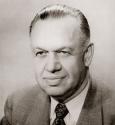
Dr. Peterson, President "Pete," the first President of the College, announces his retirement after 10 years at the end of the 1959 academic year.
Student body keeps growing
Enrollment grows to 10,000 students.
LBSC houses six schools
The schools of Applied Arts and Sciences, Business Administration, Education, Engineering, Fine Arts, and Letters and Sciences open their doors by the start of Fall 1959.A New President Elected

Dr. Carl W. McIntosh takes over the presidency of LBSC for Fall 1959.
First dormitories completed
The first dormitories are completed by September 1958, to be used by students the following year. The dormitories shift the campus from being a 'commuter campus' to a resident college.
The Los Alamitos Hall opens its door in Fall 1959 for 400 students who yearn for a more collegiate experience.

New form of operation for student government
For the first time in the school's history, student government operates on a three-branch level.
Prospector Pete
With President Peterson's retirement, students, administrators and staff name the 49er mascot "Prospector Pete" after him.
LBSC celebrates its 10th anniversary
Long Beach State College celebrates its 10th anniversary at Homecoming with a parade down Ocean Boulevard.
Student publications expand
The Daily Forty-Niner newspaper expands its offerings from four to eight pages.

Water Polo state championship
The men's water polo team brings home a state championship to Long Beach.

Taking it all the way to a track championship
The track team sweeps the competition toward the CCAA Championship.


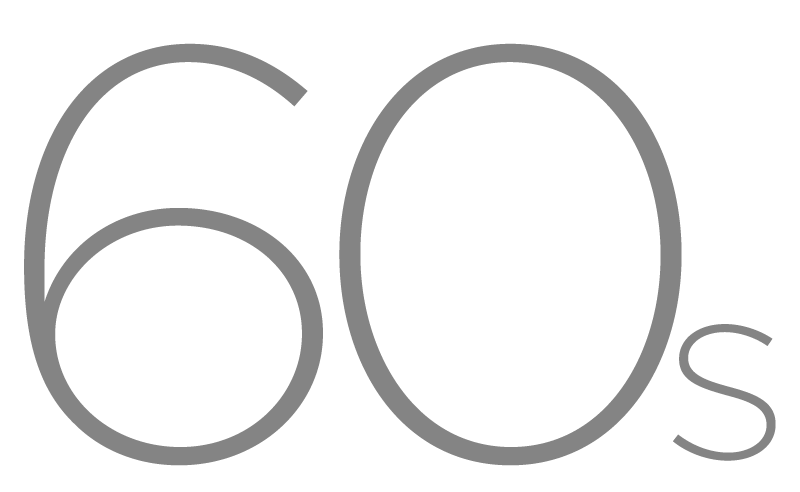
10th anniversary
Long Beach State College celebrates its 10th Anniversary at Homecoming 1960 with a parade down Ocean Blvd. In its ten years of existence, the school has grown from 169 students to around 10,000 at the start of the decade.
From a slate of five sports in 1951, LBSC's athletic program expands to a dozen varsity teams by 1960, which include football, water polo, cross country, basketball, gymnastics, wrestling, crew, baseball, golf, tennis, swimming, and track.
New buildings open their doors
The Industrial Arts Building on lower campus is completed in time for Fall classes, 1961.

The Engineering Building opens in 1962.

The Physical Education Building, completed in 1966, takes inspiration from the ancient Greek principle that both a healthy mind a healthy body are requisites for complete intellectual development.
Campus parking
By 1963, LBSC offers 3,929 parking spots, which prove to be invaluable and hard to come by as the student population keeps growing. The fee for a parking spot is $12 per semester.

A third renaming
Long Beach State College is renamed to California State College at Long Beach in 1964.
CSCLB adopts new seal
Three new symbols are added to Beach traditions in 1965: the sun and the sea, a book denoting scholarship, and a pick and shovel representing the college's 49er theme.

The birth of Kwanzaa
Dr. Maulana Karenga, professor and chairman of Black Studies, creates the African-American holiday Kwanzaa in 1966. Kwanzaa is an African American and pan-African seven-day cultural festival celebrating family, community, and culture.
First Educational Opportunity Program (EOP) in the CSU system
Dr. Joseph White, the college's second African-American professor, acquires funding from the Dean of Students, along with 75 special admission slots, to outreach to minority students in 1967, creating the first EOP in the California State College system. Dr. White becomes its first EOP director.

Largest campus in the California State College system
Enrolling over 22,000 students by 1968 makes CSCLB the largest campus in the California State College system.

Student demonstrations and protests
Students gather to protest the Vietnam War and the draft, along with newly arising social issues and injustices. Students ask for classes relevant to an increasingly diverse student body.

A fourth renaming
The college's name is shortened and stylized as California State College, Long Beach in 1968.
Enrollment doubles
From just under 10,000 students at the start of the decade, enrollment more than doubles to21,000 by 1968.
Campus architecture
Architect Ed Killingsworth and his firm draw up a 1963 master plan of the campus -- calling for a unified look to make the campus more friendly for pedestrians. The architects suggest that instead of building a huge student union atop the college's hill, they build a three-level structure set into the hillside.
Killingsworth and President Carl McIntosh champion a plan for tree planting across the campus. Aesthetically pleasing, the added trees are to help in softening the large buildings already present on campus.

Growing alumni base
By 1969, CSCLB tallies 32,244 graduates, when retiring PresidentCarl W. McIntosh confers degrees to his 10th and final graduating class.

The faculty number grows to 391 full-time faculty members, with 60% of them holding doctorate degrees.

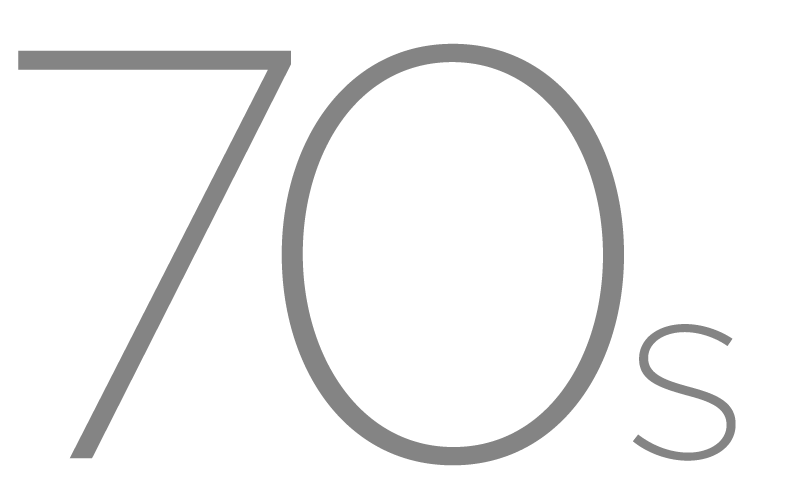
Pow Wow tradition begins
An American Indian celebration, the first Pow Wow at CSCLB in 1970 gathers tribes from across the nation to celebrate first nations and display the university's growing American Indian presence.

Student Union, Psychology building added to campus
Construction clamor abounds on campus as the Student Union and the Psychology Building are completed. The buildings are finished by November 1970.

Students protest and March for Peace
CSCLB students march on the Long Beach draft board in protest of the Vietnam War.

Protesting the mascot
Students demonstrate their objection to the image of a prospector on tribal land. On campus, students begin to demand classes that reflect the increasing diversity of the student body.
Largest band on West Coast
CSCLB boasts the largest band on West Coast in 1970 as the Forty-Niner Marching Band performs before a national TV audience during the New York Jets - San Diego Chargers game.

New president at CSCLB
Dr. John Stephen "Steve" Horn becomes the third president of California State College, Long Beach in Fall 1970.

Raising disability awareness on campus
Students from the Handicapped Student Association have President Horn and his Physical Planners traverse the campus in a wheelchair for a day in 1971.
Fourth renaming
For the fourth time, in 1972 the university is renamed to its current official name: California State University, Long Beach.
CSULB Pilot Program for Disabled Student Services
In 1973, California State University, Long Beach is given the pilot program for establishing Disabled Student Services (DSS), the first of its kind in the entire California State University system.

Student Union opens
The new student-owned, student-run union becomes the place to meet upon its completion in the 1976-77 academic year.

Riding the little Toot Toot to class
Students get to ride on the boat-looking shuttle bus to and from classes and study hall.

CSULB dominates 1976 Olympic Games
Sixteen participants in the 1976 Olympic Games hail from CSULB, more than any other American university.
Women's Resource Center established
Rosemary Taylor and Linda Shaw meet with a group known as the Friends of the University Women's Center to minimize the campus disparity for women support services. In 1977, an official University Women's Center (UWC) is created. Throughout the years, the UWC goes through a number of changes and is eventually renamed the Women's Resource Center.
CSULB makes Guinness Book of World Records
The university sets a 1978 world record with the largest submarine sandwich on record.


First adult learning disabilities program in the West
Disabled Student Services (DSS) establishes the Adult Learning Disabilities Program at Long Beach in 1979, the first of its kind on the West Coast.


Funding for Disabled Students Services
The Division of Student Services receives additional funding from the State of California in 1981 to provide services to blind, deaf, and hard of hearing students.
Andrew Young speaks to campus
A standing-room-only crowd of over 1,000 jams into the Multipurpose rooms on Oct. 2, 1981, to hear Andrew Young, the former United States Ambassador to the United Nations and ex-aide to the Rev. Martin Luther King, Jr., speak to students about President Ronald Reagan, foreign policy, and the role of the United States in the changing world.
Earl B. Miller Japanese Garden
The Japanese Garden opens in April 1981, dedicated by Mrs. Loraine Miller Collins in memory of her late husband. The Garden, designed by landscape architect Edward R. Lovell, is built on 1.3 acres and features a bridge, teahouse, pine trees, bamboo plants, bonsai, and a pond with Koi. The Japanese Garden's mission is "to provide a place of refuge, beauty, and learning for all who enter its gates."
Football captures PCAA Title
The Men's Football team wins the 1981 PCAA Championship with a dramatic, last-minute win in their final league game.

University 100
A new course, University 100, becomes a requirement to graduate in 1982. The course introduces students to campus life and shares resources available to them.
First High Tech Center in the CSU
In 1984 the Disabled Student Services establishes the first High Tech Center in the CSU system, providing assistive technology as a usable means to accomodate more students with disabilities.
KLON Jazzin' Up the Air
By 1984 approximately 18 students per semester are enrolled in the Broadcast Journalism class that supplies KLON with its tunes and news.
Cheer Squad Champions
The CSULB cheer squad captures the 1986-1887 National Pom Pom Championship.

International House grand opening
The opening of the International House in 1988 provides housing for both international and American students.
President Horn resigns
President Horn announces his resignation in 1988.
Women's Volleyball Wins NCAA National Championship
The Women's Volleyball team wins the 1989 NCAA Championship. The championship sparks a winning cycle for the Women's Volleyball team in years to come.


Big West Conference Champs
The Dirtbags win the prestigious Big West Conference crown in the spring of 1992. Forty-Niner Jason Giambi led the team in batting average and was a starting member of the 1992 U.S. Olympic Team.

The Blue Pyramid arrives

Ground is broken for The Pyramid on Dec. 17, 1992, an athletic arena housing 5,000 spectators. The arena, which opens on Nov. 30, 1994, becomes home to the men's and women's basketball and volleyball teams.
The Carpenter Performing Arts Center opens its doors
Built in 1994, the Richard and Karen Carpenter Performing Arts Center opens its doors to large and small productions, concerts, and other special events. With a 1,054-seat capacity and a stage modeled after the David H. Koch Theater at Lincoln Center for the Performing Arts, the Carpenter Center also houses the Richard & Karen Carpenter Exhibit, a permanent display of awards and memorabilia from the music duo the Carpenters, both former CSULB students.


President Maxson brings the "Go Beach" spirit

Robert Maxson becomes the fifth president at CSULB after President Curtis McCray retires in 1994.
Maxson popularizes the "Go Beach" phrase, adding the slogan in his speeches and across campus.

Inaugural President's Scholars Class
President Maxson introduces the first President's Scholars class of 10 students in Fall 1995. President's Scholarships are the most prestigious merit-based scholarships awarded by The Beach and have helped make CSULB a university of choice for students across the country.
SOAR arrives on campus
Student Orientation Advising Registration (SOAR), a service tailored for incoming and transfer CSULB students, opens its doors in 1995. The mission of SOAR is to holistically address students' academic and social transition to The Beach. Services include: group advising sessions, a bulletin, schedule of classes, a set of common experiences and information designed to set the tone for student achievement.
Big West Conference Basketball Champs
The Men's Basketball team wins the Big West Conference Championship in 1995.
Workability IV Program
Disabled Student Services, in partnership with the California Department of Rehabilitation, establishes the Workability IV Program in 1996 to assist students with disabilities in obtaining jobs and careers.
Women's Volleyball perfect season
The 1998-1999 Women's Volleyball team, led by Misty May, finishes a perfect 36-0 undefeated season, along with a second NCAA Championship. Misty May-Treanor eventually goes on to become a three-time Olympic Gold medalist.



September 11, 2001
The campus closesm unexpectedly for the remainder of the day due to the tragic news of the Sept. 11 terrorist attack. Four hijacked planes - two in New York, one in Washington, D.C., and one in Shankesville, Penn. - piloted by militants associated with the extremist group al Qaeda - crash into the Twin Towers, the Pentagon and into a Pennsylvania field. Almost 3,000 people are killed.

New construction on campus
Brotman Hall, as well as construction of the new Molecular and Life Science Center begin in 2002.
Arnold comes to CSULB
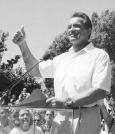
Gubernatorial candidate Arnold Schwarzenagger comes to CSULB in September 2003 for his first public campaign appearance.
Student walk-out
CSULB students stage a walk-out to protest fee increases in 2004.

Added awareness for mental health
In 2004, the Disabled Student Services (DSS) hires the first case manager in the CSU system and expands services to support mental health challenges.
Pyramid renamed
The Pyramid is renamed the Mike and Arlene Walter Pyramid in 2005, after a $2 million donation from former dean of the College of Business, Mike Walter.
New CSULB president
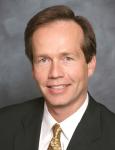
President Robert C. Maxson retires after 11 years in 2006, and President F. King Alexander begins his campus leadership at CSULB.
Project OCEAN comes to campus
Project OCEAN (On-Campus Emergency Assistance Network) is established in 2008 to provide suicide prevention training and promote mental health awareness on campus.
Music Department renaming

The Music Department is officially renamed The Bob Cole Conservatory of Music in honor of an endowment gift from the estate of Bob Cole in 2008.
President's Forum on International Human Rights
The campus launches its first President's Forum on International Human Rights. The 2008 theme is "Modern Genocides and Global Responsibilities." Over 6,000 students, faculty, staff and community members participate.
Big West Champions
Women's Golf team wins the 2009 NCAA Big West Championship.

LIFE Project founded
The LIFE Project (Learning Independence for Empowerment) is founded in 2009 by the Disabled Student Services to provide programs and services for students on the autism spectrum.
Students urged to 'Raise Your Voice'
ASI's “Raise Your Voice” campaign continues at the University Student Union Southwest Terrace, in a push to get students registered to vote and engaged in the upcoming Nov. 4, 2008, U.S. presidential election. The campaign also features a series of debate-watching parties where Sens. Barack Obama and John McCain square off.



Student Recreation and Wellness Center arrives on campus
After years of planning and construction, the Student Recreation and Wellness Center opens its doors for Fall 2010.

First Rhodes scholar
Stephanie Bryson, class of 2011, becomes the first Rhodes Scholar at CSULB.
Furlough protests
Students, dressed in red, join faculty and staff members from every department to present a united front in protesting the furlough cuts during the 2010-11 academic year.

Women's Gender and Equity Center
The Women's Resource Center changes its name to the Women's Gender and Equity Center in 2014 and revises its mission, vision and values to expand its services to all gender identities and expressions.
A new president arrives
Jane Close Conoley becomes the seventh university president in 2014, and the first woman in a non-interim role to hold the office in the 65-year history of the campus.

Beach Athletics renaming
Athletics drops the 49ers mascot and nickname, and solidifies the moniker "Beach Athletics."
Silent protest
A yellow blindfold is placed over the eyes of Prospector Pete as part of “Blind to History” in 2014, and yellow flags are placed near the statue as part of an annual installation representing the deaths of more than 130,000 indigenous Californians between 1846 and 1900.

Student Success Center groundbreaking
The Peterson Hall 2 Renovation Project provides a “Student Success Center” in 2017, a home for campus organizations that provide student support.
CPIE building opens
Two years after breaking ground on construction, the new College of Professional and International Education (CPIE) building opens for classes and events on campus in Fall 2018.

Prospector Pete retired
Cal State Long Beach retires its mascot, Prospector Pete and ASI passes a resolution to move the statue to the new alumni center in 2018.
Bob Murphy Access Center

The newly renovated Student Success Center becomes home to the Bob Murphy Access Center in 2019 - formerly known as Disabled Student Services - and BUILD, which supports undergraduate research in the health sciences, and the Women’s Gender & Equity Center.
New mascot selected
President Jane Close Conoley ratifies a student-initiated vote that selected the shark as the new university mascot in May 2019. The new mascot makes its debut in August 2020


Campus suspends In-person activities due to COVID-19
The university suspends in-person, on-campus activities in March 2020 due to the developing COVID-19 pandemic.
OneBeach Spirit
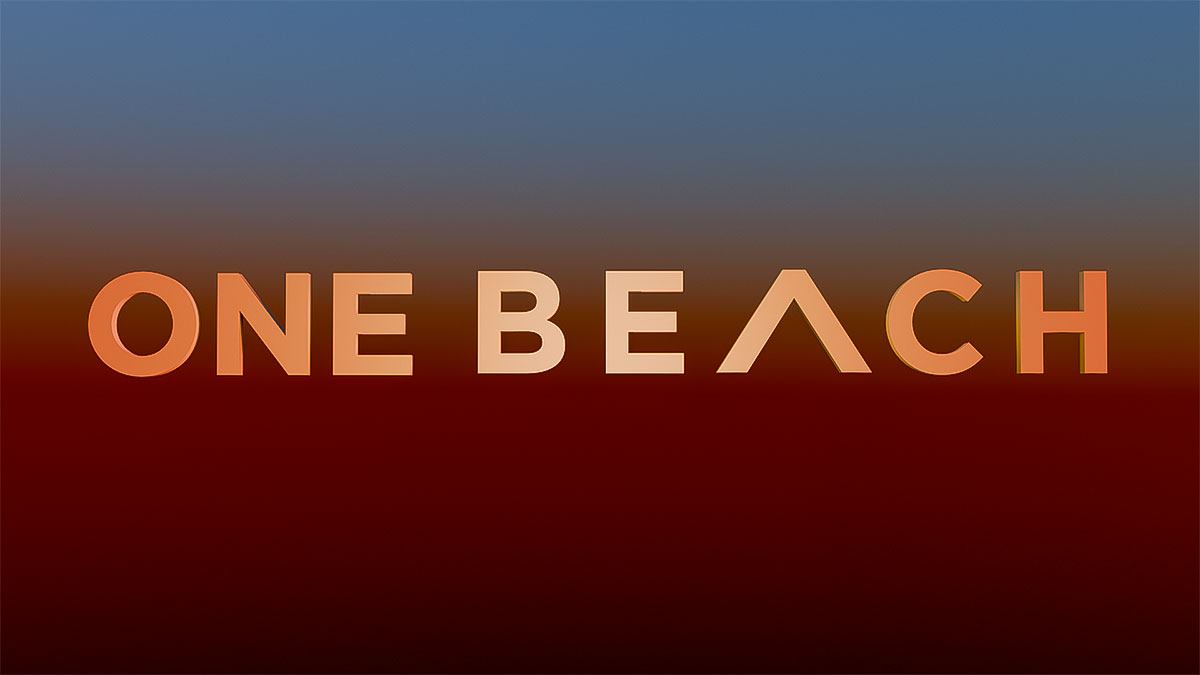
In March 2020, President Conoley coins the term OneBeach in response to the challenges posed by the pandemic, racial injustice, and uncertainties surrounding DACA students.
Project Rebound
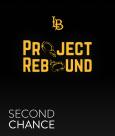
In July 2020, CSULB is granted a chapter of the state-wide Project Rebound, an organization that helps formerly incarcerated students transition from prison to graduation.
Elbee's debut
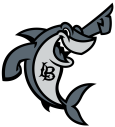
Elbee, the new university mascot, makes their debut Aug. 17, 2020.
The unveiling comes more than a year after the conclusion of a student-initiated process that first, widely solicited ideas for a new mascot, sent semifinalist concepts to a broad community vote, and finally offered up three finalists for a student referendum.
Elbee is a phonetic reference to the letters "L" and "B" in "Long Beach."
Virtual fall semester
After careful consultation with medical experts, campus stakeholders, and the CSU System, campus officials plan to offer primarily remote instruction for Fall 2020.
Beach alumni join the White House

In January 2021, CSULB graduate Asia Garner '19 joins First Lady Jill Biden's communication staff, while Eduardo Cisneros '06 joins President Joe Biden's COVID Response Team. Read about the many members of The Beach community who are working or have worked in the White House
CSULB awarded 10-year accreditation
The Beach receives a full 10-year accreditation by the Western Association of Schools and Colleges Senior College and University Commission (WSCUC). A 10-year accreditation is the maximum term granted and shows a measure of confidence in the work CSULB has done since its last review.
BEACH 2030 Strategic Plan launched
CSULB launches its Beach 2030 Strategic Plan, a comprehensive roadmap of goals and actions to guide operations through this decade. The entire Beach community participated in the development to strengthen the university’s planning.
Sustainable residential hall unveiled
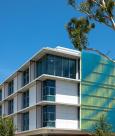
Parkside North Residence Hall, the campus' first new housing building in 34 years, was designed with high sustainability goals. The building will create as much renewable energy as it uses and features reclaimed water and a solar rooftop terrace that aims toward reaching the CSU’s carbon neutrality 2030 goals.
Space Beach
As the city of Long Beach reemerges in the aerospace and astronautics industry, Cal State Long Beach looks back at its close ties with the space industry, from developing undergraduate and graduate programs, immersive co-curricular experiences and workforce pipelines with industry partners.

Hillside gateway building raises the bar for sustainability
The new Hillside Commons is one of only 30 buildings worldwide to meet the Living Building Challenge - one of the most ambitious green building standards in the world - according to Corry Colonna, executive director of housing and auxiliary services.

CSULB elevated to Doctoral University designation
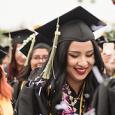
The Beach was promoted in status from master's level to one that awards doctorates, by the Carnegie Classification of Institutions for Higher Education.
No Barriers: The Campaign for Cal State Long Beach
In June 2024, the university concluded its most ambitious fundraising effort, the No Barriers campaign, which raised more than $313 million.
75th anniversary
The Beach celebrates another major milestone: 75 years of empowering students, alumni and the community with over 400,000 work-force ready graduates.
2025 champs
Long Beach State won the 2025 National Collegiate Men’s Volleyball Championship, capturing its fourth NCAA national title in program history.
Conoley retires
After more than a decade of leadership to The Beach, President Jane Close Conoley retires. "Serving as your president has been the honor of my career," she tells a grateful campus.
President Jones '82 arrives
In August 2025 Andrew Jones '82, California State University executive vice chancellor and general counsel, is appointed president of CSULB.
Economic impact
A 2025 report from ICF, in partnership with the CSU Chancellor’s Office and campuses, shows that The Beach generates an estimated $2.4 billion worth of economic activity while supporting some 16,800 jobs. The enhanced earnings of CSULB alumni attributable to their Beach degree every year support 51,100 jobs and $10.6 billion in annual economic activity.




